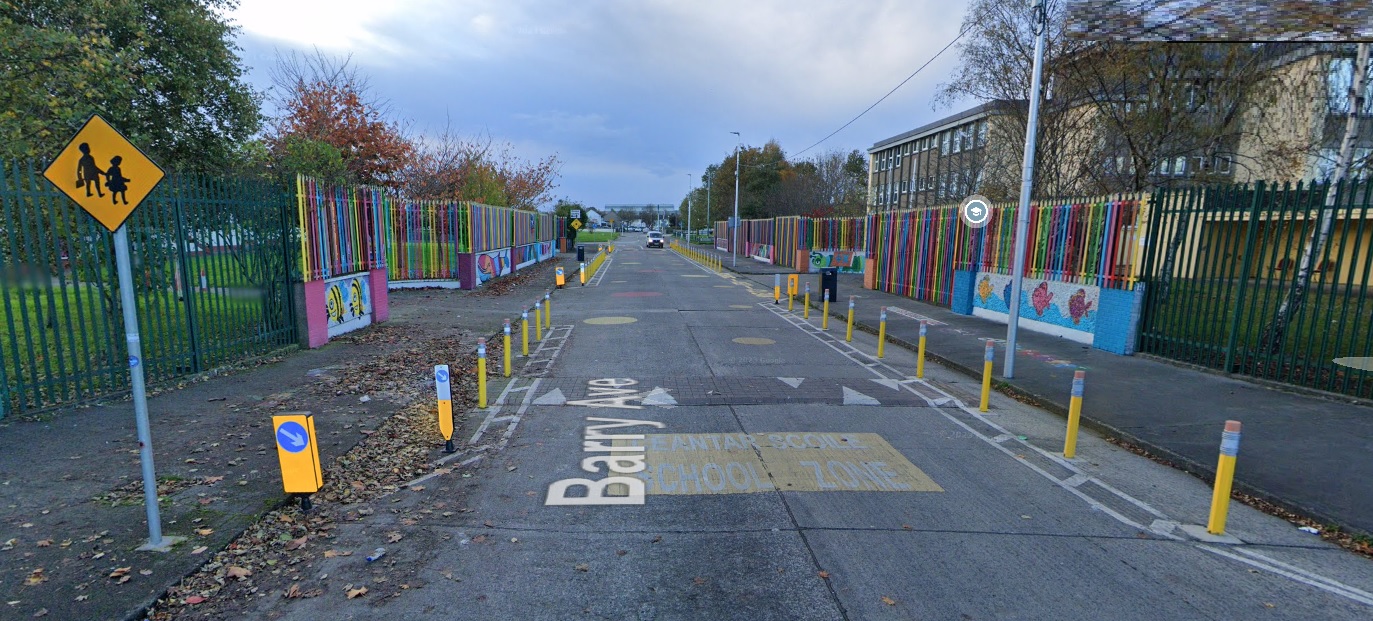Key Points from the Advice Note:
- This document is to be read in combination with the NTA Safe Routes to School Design Guideand the NTA Rapid Build Active Travel Facilities Advice Note;
- Cost Effective Rapid Build construction approaches, including road space reallocation and the introduction of school streets, are now required to be the primary options considered in new Safe Routes to School infrastructure; and
- Such approaches have been shown to produce high quality results as outlined in the many Irish Case Studies in this document and the NTA Rapid Build Active Travel Facilities Advice Note.
The Safe Routes to School (SRTS) Programme was developed in partnership by the NTA and Green-Schools, An Taisce, in 2020, as a response to the need to support schools to increase walking and cycling to school.
Aims of the SRTS Programme:
- Improve safety at the school gate by providing ‘front of school’ treatments to alleviate congestion and improve access;
- Improve access routes to school by improving walking and cycling infrastructure; and
- Increase the number of students who cycle to school by expanding the amount of cycle parking
The NTA Safe Routes to School Design Guide published in 2021 provided technical guidance on designs to enable Local Authorities to create safer and calmer front of school environments, and more attractive routes to school.
There are 932 schools in the SRTS programme, and while work will be carried out with these schools sequentially, the impetus is on engaging with as many as possible as quickly as possible. At the same time the increase in construction costs in recent years, the targets set by the Climate Action Plan (500 School Zones and reduction of ‘school run’ journeys undertaken by private car by 30% by 2025) and the hierarchy of interventions specified by National Investment Framework for Transport in Ireland (NIFTI), have all led to a need to deliver SRTS infrastructure using rapid build, cost-effective methods both to maximise the amount of Safe Routes to School infrastructure delivered within available budgets and to increase the speed of delivery.
While the NTA’s NTA Rapid Build Active Travel Facilities Advice Note deals with rapid build cost effective methods for active travel routes to schools, the focus of this advice note will be on cost effective ‘front of school’ interventions. The guiding principle is “Doing More for Less”. Further advice on ‘front of school’ environments for national high speed roads (80-100kph) and other regional and link high speed roads will be shared in due course.
- File type
- PDF
- File size
- - 3 MB

